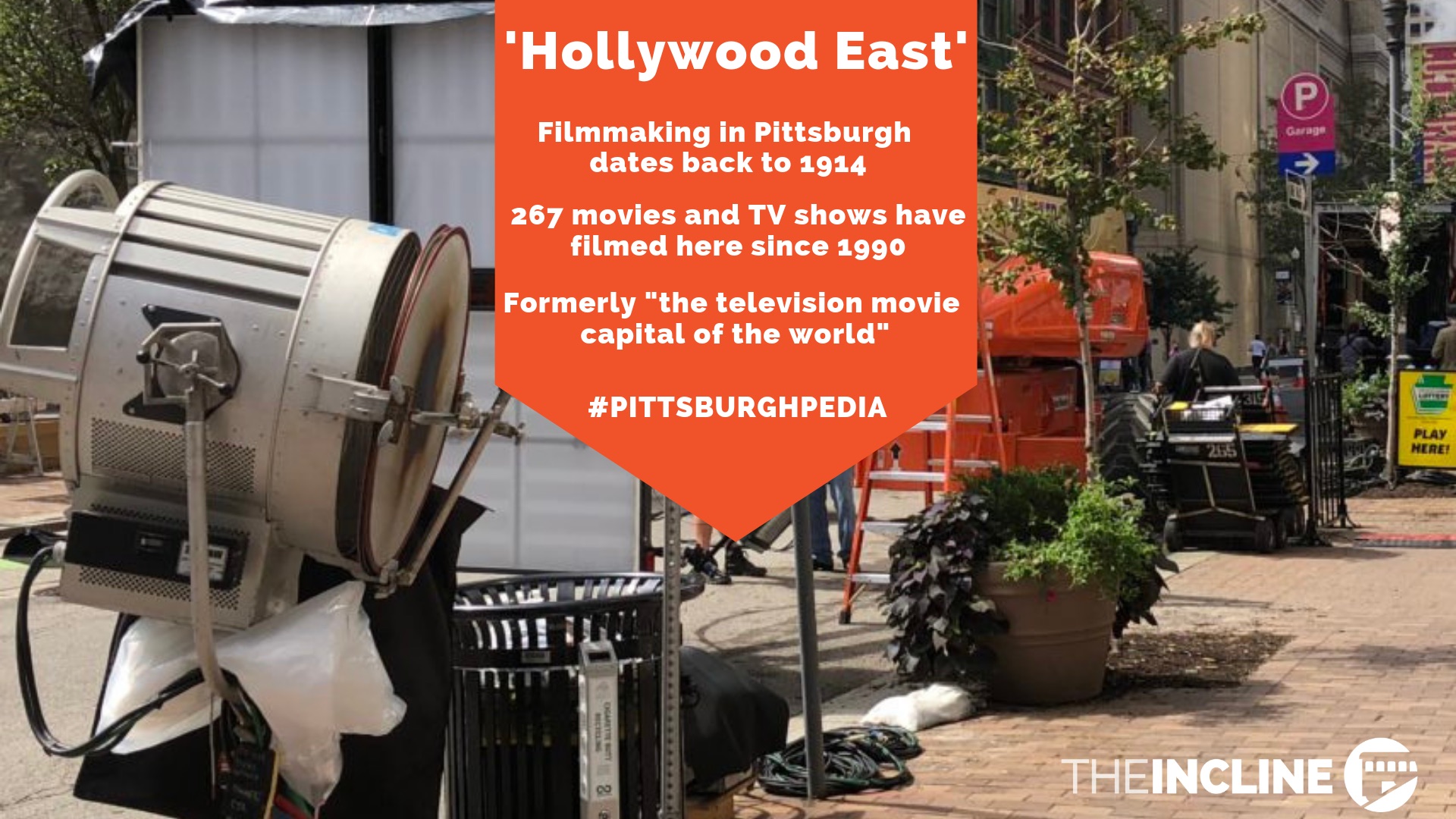
Know your weird and wonky Pittsburgh terms? This post is part of our Pittsburghpedia series, a handy glossary of words and phrases unique to our city that’ll help you #talklikeyoulivehere. Let’s fill you in. Today’s entry … Tinseltown East/ Hollywood East
WHAT ARE THESE? Nicknames referring to Pittsburgh’s popularity as a location for film and TV shoots.
USAGE: “Once known for its steel mills and smog, Pittsburgh is fast becoming the Tinseltown of the East.” – CNN, Aug. 7, 2012
ORIGIN STORY: Credit the zombies.
George A. Romero’s seminal 1968 zombie flick “Night of the Living Dead” is credited with accelerating the growth of commercial filmmaking in Pittsburgh and southwestern Pennsylvania, Dawn Keezer, director of the Pittsburgh Film Office, said.
And the process dates back even earlier.
“They’ve been making movies in Pittsburgh and southwestern Pennsylvania since 1914, the first being “The Perils of Pauline,”” Keezer explained.
Over the years, the region has been the backdrop for films like 1978’s “The Deer Hunter,” 1983’s “Flashdance,” and 1991’s “The Silence of the Lambs.”
But it took a post-9/11 state decision for Pittsburgh to reach the level of film ubiquity it has today.
LIGHTS, CAMERA, TAXES: The terror attacks of Sept. 11, 2001, effectively halted a push for nationwide legislation that would have offered federal tax incentives to films produced in the U.S. on top of incentives offered by individual states.
(The program would have mirrored Canada’s two-pronged tax credit program, which made Canada a world-class movie production center and drew productions from places like Pittsburgh, considered the “television movie capital of the world” through 1995 when Keezer said those productions “all left the country” and started going north.)
But a handful of states, Pennsylvania among them, went ahead with their own incentives anyway.
Pennsylvania currently offers $70 million a year in tax credits and incentives for in-state productions, which coupled with the relatively low overhead and depth of support services here has made Pittsburgh the state’s most sought-after movie-making destination, even over Philadelphia, Keezer explained. (These incentives are not without their conservative critics.)
But beyond those credits and incentives, Keezer said Pittsburgh remains a draw due to the “depth of our crew but also the diversity of our locations,” adding, “as long as you don’t need a beach or a desert, we can look like that.”
While lawmakers debate the $70 million in tax credits currently offered by the state, Keezer said about $125 million a year is needed to “handle the amount of work that wants to be in southwestern Pennsylvania.”
MOVIE TRIVIA: Since 1990, 267 movies and TV shows have filmed in the Pittsburgh area — 72 in the past decade. This includes blockbuster films like “Dark Knight Rises,” “The Perks of Being a Wallflower,” and “Fences.” There are three major projects filming in Pittsburgh right now: “Ma Rainey’s Black Bottom,” “I Am Not Okay With This” (TV), and “Manhunt: Lone Wolf” (TV).
MOVIE TRIVIA, THE SEQUEL: “The Dark Knight Rises” dropped Allegheny County’s unemployment rate by a full percentage point in August 2012, in large part because the production hired 10,000 extras to wear winter clothes in the middle of July and sit in the stands at Heinz Field. The result was this scene. (Note the last name of the away team’s kicker at the 1:41-mark in that clip.)
COMING ATTRACTIONS: The Mister Rogers film starring Tom Hanks is due out later this year, along with “Where’d You Go, Bernadette,” starring Cate Blanchett. There’s also a bevy of Pittsburgh-shot Netflix shows in the works, another season of David Fincher’s moody crime drama “Mindhunter” among them.
Got a Pittsburgh term you’re curious about? Ask away.
Catch up on previous Pittsburghpedia entries:
Pittsburghpedia: ‘The T’ doesn’t stand for what you think
Pittsburghpedia: Get sucked in by this ‘The Bathtub’ explainer